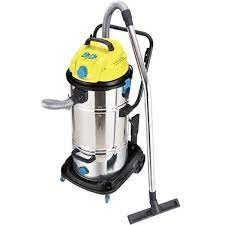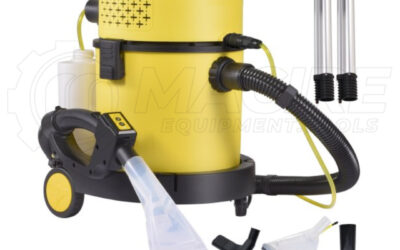Introduction
Cleaning equipment is a crucial investment, but its true value is unlocked through knowledge and proper usage. This guide dives deep into the nuances of assembling, choosing the right cleaning chemicals, maintaining safety, and achieving the best cleaning results.
Table of Contents
| Heading | Subheading |
|---|---|
| 1. Getting Started | – Introduction to cleaning equipment importance |
| – The impact of effective usage | |
| 2. Assembling Your Tools | – Step-by-step guide for each equipment type |
| – The importance of proper assembly | |
| – LSI Keywords: Cleaning equipment setup, Tool assembly | |
| 3. Choosing the Right Cleaning Chemicals | – Matching chemicals to surfaces |
| – Importance of understanding surface materials | |
| – Ensuring compatibility for optimal results | |
| – LSI Keywords: Surface-specific cleaning chemicals | |
| 4. Safety First: Tips for Secure Usage | – Necessary protective gear |
| – The role of protective gear in accident prevention | |
| – Operational precautions | |
| – Emergency protocols | |
| – LSI Keywords: Cleaning equipment safety, Protective measures | |
| 5. Tips for Optimal Cleaning Results | – Techniques for efficiency |
| – The impact of effective strokes and strategic movements | |
| – Troubleshooting common issues | |
| – LSI Keywords: Cleaning equipment efficiency, Troubleshooting tips |
How to Use Cleaning Equipment Safely and Effectively
1. Getting Started
Embarking on the journey of effective cleaning starts with understanding the profound impact of using your equipment correctly. Whether you’re a seasoned cleaner or a novice, appreciating the importance of proper usage sets the stage for a cleaner, healthier environment.
2. Assembling Your Tools
– Step-by-step guide for different equipment
Each cleaning tool comes with its unique set of assembly instructions. This section takes you through the step-by-step process for various equipment types, ensuring a smooth and error-free setup.
– The importance of proper assembly
Proper assembly is the foundation of efficient cleaning. Delve into why correctly assembling your tools not only ensures optimal performance but also extends their lifespan.
3. Choosing the Right Cleaning Chemicals
– Matching chemicals to surfaces
The key to effective cleaning lies in using the right chemicals for specific surfaces. Uncover the science behind matching cleaning chemicals to different materials and how it contributes to impeccable results.
– Importance of understanding surface materials
Explore why understanding the materials of the surfaces you’re cleaning is paramount. This knowledge empowers you to make informed decisions, preventing damage and enhancing the longevity of surfaces.
– Ensuring compatibility for optimal results
Beyond surface-specific recommendations, discover the intricate dance between cleaning chemicals and equipment. Ensuring compatibility guarantees not only effectiveness but also safety in your cleaning routine.
4. Safety First: Tips for Secure Usage
– Necessary protective gear
Your safety is non-negotiable. Understand the importance of wearing the right protective gear and how it forms the first line of defense against potential hazards during cleaning tasks.
– The role of protective gear in accident prevention
Dive deeper into the specifics of how protective gear contributes to accident prevention. From gloves to safety glasses, learn why each piece is vital for your well-being.
– Operational precautions
This subsection outlines detailed operational precautions. From proper machine handling to environment considerations, these precautions ensure you navigate potential hazards with confidence.
– Emergency protocols
Unforeseen circumstances can arise. Arm yourself with this guide on emergency protocols, offering step-by-step instructions to handle unexpected situations calmly and efficiently.
5. Tips for Optimal Cleaning Results
– Techniques for efficiency
Elevate your cleaning game with expert techniques. From understanding the right pressure to employing efficient strokes, these tips unlock the full potential of your cleaning equipment.
– The impact of effective strokes and strategic movements
Explore how the nuances of your movements can impact cleaning results. Mastering effective strokes and strategic movements ensures thorough and efficient cleaning, leaving no spot untouched.
– Troubleshooting common issues
Even the best equipment encounters hiccups. Navigate and resolve common issues seamlessly with these troubleshooting tips, ensuring minimal disruptions to your cleaning routine.
Frequently Asked Questions (FAQs)
Q: Can I use the same cleaning chemicals for all surfaces?
A: While it might seem convenient, not all surfaces are created equal. Tailoring your cleaning approach by selecting chemicals suitable for specific materials ensures optimal results without causing damage.
Q: What protective gear is essential for using cleaning equipment?
A: Safety first! Always wear gloves, safety glasses, and appropriate clothing to protect yourself from potential hazards during cleaning tasks.
Q: Is it necessary to follow the equipment’s user manual?
A: Absolutely! The user manual is your guide to proper assembly, usage, and maintenance. It’s a valuable resource for maximizing your equipment’s lifespan and performance.
Q: How often should I inspect my cleaning equipment for wear and tear?
A: Regular inspections are key to spotting issues early. Check your equipment before each use and address any wear and tear promptly to ensure optimal performance.
Q: Can I mix different cleaning chemicals for a stronger effect?
A: Mixing chemicals can be dangerous and counterproductive. Stick to manufacturer recommendations to avoid chemical reactions and ensure the safety of your cleaning process.
Q: What should I do in case of equipment malfunction during use?
A: Immediately turn off the equipment, unplug it, and refer to the user manual for troubleshooting. If the issue persists, contact the manufacturer or a qualified technician.
Conclusion
Mastering the art of using cleaning equipment safely and effectively is a game-changer. Armed with these insights, you’re ready to tackle any cleaning task with confidence. A clean space not only looks good but also contributes to a healthier and more comfortable environment.





0 Comments